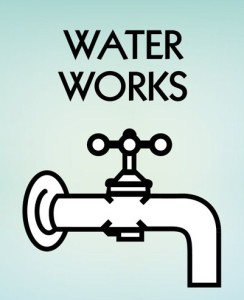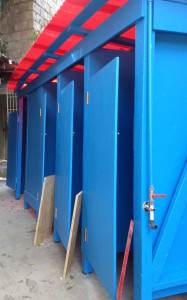 The Fond Blanc Water Works is up and running! We just finished making some critical improvements to the water supply system at the Fond Blanc orphanage. It hardly sounds like a newsworthy project, but this is actually a “game-changer” for us.
The Fond Blanc Water Works is up and running! We just finished making some critical improvements to the water supply system at the Fond Blanc orphanage. It hardly sounds like a newsworthy project, but this is actually a “game-changer” for us.
Unless you happen to live in southern California, you probably don’t have to think much about your own water supply, but water issues have been an important challenge for the orphanage. You might expect the problems to be about water quality, but again like the Californians, our situation was actually more about water quantity, and getting the water to where we need it. Water pressure is a big consideration too.
Fond Blanc is blessed with lots of water – and it is naturally quite clean by Haitian standards – so what is the big deal?
We think Fond Blanc (White Fountain) is aptly named because the area has some of the best groundwater most of us have ever encountered in Haiti. The mountains that rise at our backs catch a tremendous amount of rainfall at elevations where there is not so much exposure to contaminating human activity, so we start with a good supply of relatively clean water. (We’ll talk more about the critical issue of water purity in a later post.)
That water comes to us through a community pipe that originates a good bit further up in the hills. We are not quite sure who to thank for that community pipe, but as the water travels downhill to us, gravity provides enough natural pressure to get the water into our compound where it had been adequate to meet our needs on the ground… Except that our needs have grown a lot and we also don’t live on ground level so much anymore.
Most of the increased demand for water is related to our emphasis on hygiene and the larger number of people using water in the compound. For example, as a part of really stressing good hygiene habits with the children, we ask them each to shower/bathe twice every day. That is over 100 showers a day right there, and it doesn’t account for all the teeth-brushing and hands-washing that is also being emphasized.
 Then there are the water needs of the staff, the missionary teams and all the other visitors to consider as well. When you put it all together and plan (as one must) for peak usage needs, you start to see that the orphanage could not really expect to function on the higher level we are aiming for until the water supply was better scaled to our needs.
Then there are the water needs of the staff, the missionary teams and all the other visitors to consider as well. When you put it all together and plan (as one must) for peak usage needs, you start to see that the orphanage could not really expect to function on the higher level we are aiming for until the water supply was better scaled to our needs.
Water moves by pressure, and in a location with limited electricity resources, that means relying as much as possible on gravity for water pressure. But the gravity pressure of the community pipe simply could not push the water upstairs to all three levels of orphanage life. That means using plastic rooftop water tanks for gravity pressure, and requires an electrical water pump to fill them.
Therein lies a part of the problem we were facing: We have a good pump, but it has labored to do the job, and needed to run for hours at a time to refill the tanks. Because the volume of water coming in from the community pipe was too low, the pump was being “starved” and was pushing as much air as water up to the rooftop tanks. And, of course, we were burning through propane fuel for all those many hours the pump had to run to do its job.
Pastor Jean Claude solved the biggest piece of the water puzzle for us. He built a 7000 gallon reservoir in the ground beside the new church. Reservoirs are part of the way Haitians normally manage their water supplies. Pastor has a reservoir at his house in Port-au-Prince, so we know how well he maintains them. Periodically, they will drain the whole thing and go in to scour the walls with bleach to keep everything clean.
The community water pipe is more than sufficient to fill the reservoir, and it can run 24/7 if need be without costing anybody anything. Some day, Pastor may add a second reservoir at the other end of the church, but that is not needed to meet our needs for the foreseeable future. The new reservoir was all we needed to jump into action. As usual, our donors provided funds for materials, and volunteers did all the work to make the necessary changes that would solve the problem.
We were able to relocate the water pump to a new home, down below the reservoir on the back wall of the compound. This lower position means that water will naturally flow down into the pump, where previously the pump was working as hard to pull water in as it was to push it up to the roof. We also used much larger diameter pipe everywhere, so the volume of water being moved by the same pump is much greater than what we were able to achieve previously.
The pump is finally able to operate as it was designed to do, and the result is that we can refill the 600 gal. rooftop water tanks in minutes instead of hours. This improvement gives us more latitude in managing our water consumption, and the biggest difference will be noticed in the showers. In the old days, most of those were “bucket showers” where the kids just scooped water from a trough and poured it over their own heads. But since the construction of new children’s showers in January, the shower water all comes from the roof, so being able to rapidly refill the tanks is a critical improvement in process.
That may be more than you ever wanted to know about water systems, but it is a good example of ways we can help our Haitian friends solve bottleneck issues and improve on essential processes. It is exactly these sorts of limitations that impede general progress in Haiti, but many good things can “flow” from an improved system, and now you can understand why we got so excited about something as mundane as plumbing.
